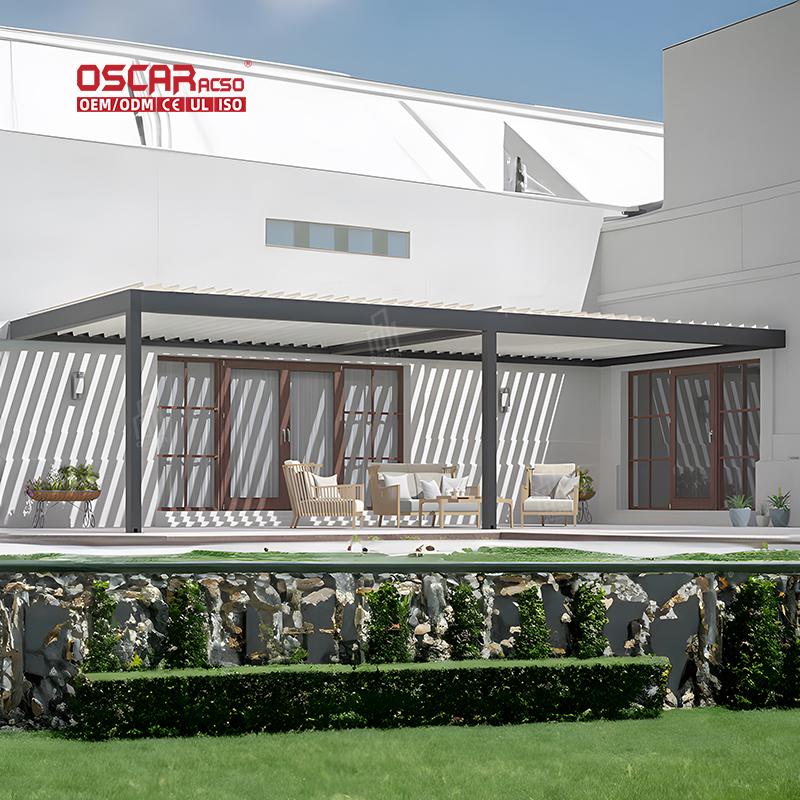Pergola Longevity Unlocked, Enjoy Your Outdoor Oasis for Decades
How long can you expect your pergola to last? This isn’t just a simple question about a number of years. It’s about unde...
How long can you expect your pergola to last? This isn’t just a simple question about a number of years. It’s about understanding how your choices in material, the environment it lives in, and the care you provide intertwine to create a lasting outdoor retreat. Let’s dive into the factors that determine whether your pergola becomes a fleeting garden feature or a enduring legacy.
The Core Determinant: Your Choice of Material 🛠️
The material you select is perhaps the single most important factor deciding your pergola’s lifespan. Each option comes with its own expected longevity and maintenance profile.
- •
Aluminum: A top contender for durability and low maintenance. High-quality aluminum pergolas are rust-resistant and can easily last 20 to 25 years, often even longer—up to 30 years or more with minimal upkeep. They don’t warp, rot, or fade like other materials, making them ideal for harsh climates .
- •
Cedar & Redwood: These woods are beloved for their natural beauty and inherent resistance to decay and insects. A well-maintained cedar pergola typically lasts 15 to 30 years. Its longevity heavily depends on the quality of the wood and the rigor of a maintenance routine .
- •
Pressure-Treated Pine: A more budget-friendly wooden option, but it generally has a shorter lifespan of 8 to 15 years and requires more frequent maintenance to prevent decay compared to cedar or redwood .
- •
Vinyl: Known for being highly durable and low-maintenance, vinyl pergolas resist rot, insects, and decay. They are a hassle-free option that can last for many years, though they may lack the natural aesthetic of wood .
- •
Composite: This material offers the best of both worlds: the look of wood without the high maintenance. Made from a blend of wood fibers and recycled plastic, composite pergolas are resistant to the elements and can last 25 years or more .
The Battle Against the Elements: Climate and Environment 🌦️
Your local climate acts as a constant test for your pergola’s resilience. The same structure will age differently in various environments.
- •
Coastal Salt Air: Microscopic salt particles are a silent adversary, accelerating corrosion on metal components and breaking down protective coatings on wood. Pergolas within 500 meters of the coast face the most severe exposure .
- •
Intense UV Radiation: In areas with strong sun, like the Gold Coast, UV rays can cause wood to dry out, crack, and turn gray. They can also cause some powder-coated finishes to fade over time .
- •
Humidity and Moisture: High humidity creates a perfect environment for mold, mildew, and wood rot. Proper ventilation in the pergola’s design is critical to allowing moisture to escape and prevent trapped dampness .
- •
Wind and Storms: Strong winds can test the structural integrity of any pergola. Proper installation with adequate footings and robust hardware is non-negotiable for stability and safety in windy conditions .
Your Pergola’s Lifeline: The Power of Maintenance ✨
You can significantly influence your pergola’s lifespan through consistent care. Think of maintenance not as a chore, but as a way to protect your investment and extend your enjoyment.
- •
For Aluminum and Vinyl: Maintenance is straightforward. A simple clean with soapy water a couple of times a year is usually sufficient to keep it looking fresh. Occasionally check for loose bolts .
- •
For Wood (Cedar, Redwood, Pine): This requires a more dedicated approach. An annual inspection for signs of wear is crucial. Applying a high-quality sealant or stain every few years is essential to protect against moisture and UV damage . Regularly clear debris like leaves to prevent moisture buildup.
A small investment of time in maintenance can add years to your pergola’s life. It’s the key to preventing minor issues from becoming major, costly problems.
Beyond the Basics: Prolonging Your Pergola’s Life 🔍
Several other factors can tip the scales toward a longer-lasting structure.
- •
Quality of Installation: A pergola built on a solid, level foundation with corrosion-resistant hardware (e.g., stainless steel) is fundamentally set up for a longer life. Poor installation can lead to premature sagging, shifting, and weakness .
- •
Protective Finishes: For wood, a good stain or sealant isn’t optional—it’s a necessity. These finishes provide a protective barrier against moisture penetration and UV damage, dramatically extending the wood’s life and appearance .
- •
Smart Landscaping: The surroundings can help. Ensure proper drainage around the base of the posts to prevent water pooling. Strategic planting can also offer some protection from harsh winds and intense sun .
Recognizing the End: Signs You Need a Replacement ⚠️
Even the best-maintained pergola won’t last forever. How do you know when it’s time to let go?
Be on the lookout for these clear warning signs:
- •
Structural Instability: Any noticeable sagging, rocking, or movement in the posts during mild wind.
- •
Severe Wood Rot: Especially in critical load-bearing posts at ground level, where moisture damage is common.
- •
Extensive Rust: On metal structures, particularly if it has compromised the structural integrity.
- •
Multiple Broken or Splintered Beams: This indicates the wood has weakened significantly.
If repairs are extensive and would cost 40- of the value of a new structure, replacement often becomes the more sensible and economical choice .
Ultimately, your pergola’s lifespan is a story written by your choices. Opting for a quality material like aluminum or cedar, ensuring professional installation, and committing to regular, simple maintenance is the winning formula. This approach transforms your pergola from a simple backyard addition into a long-term sanctuary for making memories.


